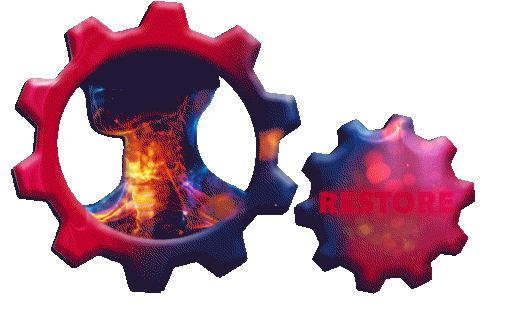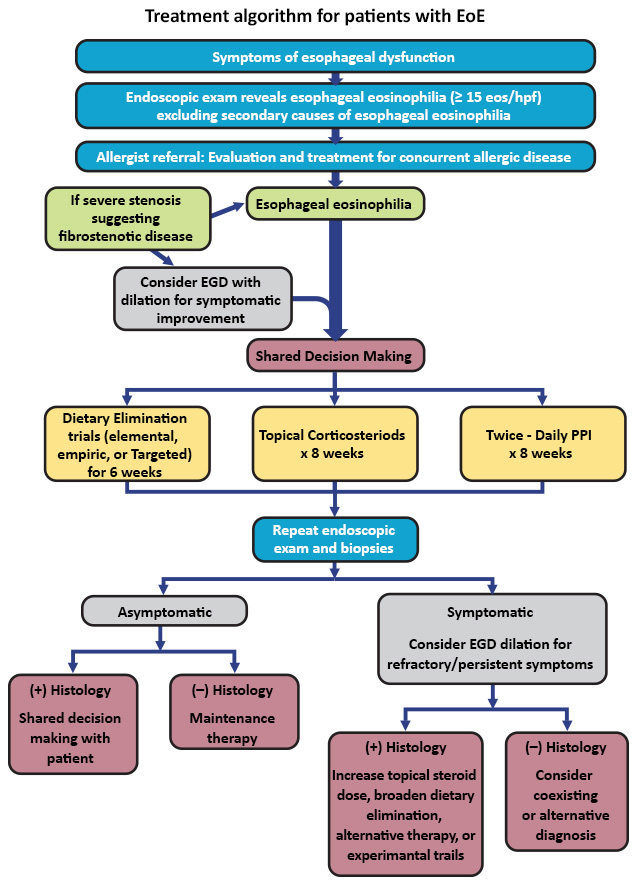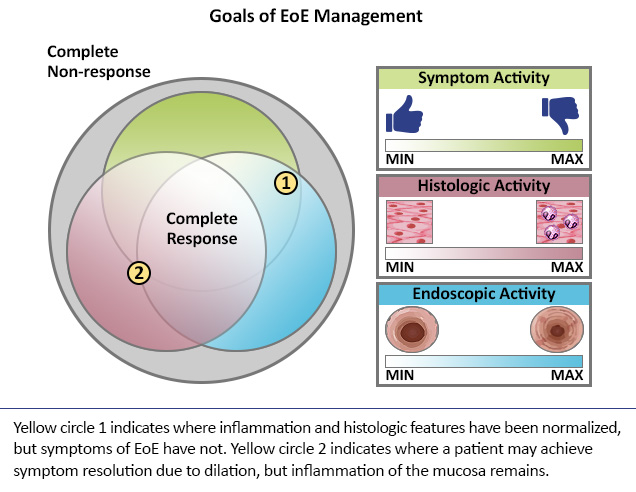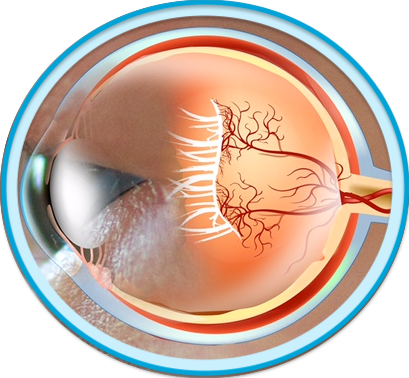EoE Management
There is no one preferred treatment for EoE. Goals and treatment preferences may differ based on age or lifestyle of the patient; therefore, the therapeutic approach should focus on shared decision-making.1,2 This should occur each time treatment is adjusted, and follow-up endoscopy and re-evaluation planned as well (Figure 1). Shared decision making is critical for supporting patients’ and helping them adhere to therapy and reach their treatment goals.3
The goals of treatment are also be discussed and followed for each follow-up appointment, which are to minimize symptoms and endoscopic histopathologic features of EoE. Figure 2 shows a graphic representation of the difference between symptom maxima and minima. Overall, maximal symptoms are dysphagia with every meal despite modified, soft-solid diet, and minimal symptoms are complete absence of symptoms with an absence of endoscopic features of inflammation, an esophageal diameter of greater than 20 mm, and 0 eosinophils per high-powered field.1
Effective treatment leads to normalization of disease features and ineffective treatment does not.1 How this paradigm changes now that dupilumab has been approved by the Food and Drug Administration for adolescents and adults with EoE has yet to be determined.
Management of patients with eosinophilic esophagitis (EoE), especially as treatment of patients begins to include biologic therapy, is optimized when using a multidisciplinary approach.5,6 For patients with EoE, this approach optimizes the continuum of care.
References
- Hirano I, Furuta GT. Approaches and challenges to management of pediatric and adult patients with eosinophilic esophagitis. Gastroenterol. 2020;158(4):840-851. doi:10.1053/j.gastro.2019.09.05
- Sher ER, Ross JA, Weine DW, Arjun AC. Current and emerging therapies for eosinophilic esophagitis. Allergy Asthma Proc. 2022;43:178-186. doi:10.2500/aap.2022.43.220014 For access to this entire article and additional high-quality information, please check with your college/university library, local public library, or affiliated institution.
- Wang R, Hirano I, Doerfler B, et al. Assessing adherence and barriers to long-term elimination diet therapy in adults with eosinophilic esophagitis. Dig Dis Sci. 2018;63(7):1756-1762. doi:10.1007/s10620-018-5045-0
- Chen JW. Management of eosinophilic esophagitis: Dietary and nondietary approaches. Nutr Clin Pract. 2020;35(5):835-847. doi:10.1002/ncp.10571
- Chawla K, Alabbas B, Sheth D, Papademetriou M. As easy as EoE: A novel and effective multidisciplinary approach to care of patients with eosinophilic esophagitis in the age of biologics. Dig Dis Sci. 2020;65(8):2196-2202. doi:10.1007/s10620-020-06366-4
- Sauer BG, West A, McGowan EC. Nutritional care multidisciplinary eosinophilic esophagitis care: A model for comprehensive patient-centered care through shared decision making between gastroenterology, allergy, and nutrition of the patient with eosinophilic esophagitis. Clin Gastroenterol Hepatol. 2021;19:2226-2229. doi:10.1016/j.cgh.2021.07.025












